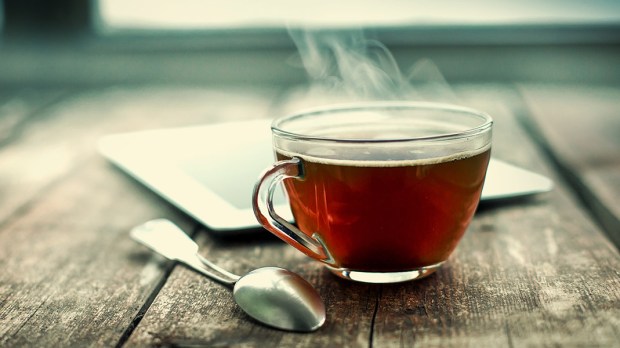Tea is more than just another drink you prepare to consume with breakfast or to sip in the afternoon with friends; this beverage has a history dating back thousands of years, and it contains many substances that are good for our health.
Tea properly speaking (as distinct from other infusions, called tisanes, made using other fruits or herbs) is obtained from the leaves of a plant of the Camellia sinensis species. Until the 19th century, the only continent that produced tea was Asia, but later it began to be cultivated in Africa, Oceania and South America. On average, worldwide consumption of tea is 1.25 pounds per capita; Turkey is the country that consumes most tea by far, at 43.2 pounds per capita.
5 Kinds of tea, according to the processing method
The different varieties of tea are not due primarily to different species of the plant, but rather to the way the leaves of the same species of plant are collected and processed, although some cultivars are more associated with one kind of tea than another.
White tea is usually obtained from young leaves of the tea bush, and they are generally not oxidated or processed at all (or only minimally). (Oxidation, in the case of tea leaves, generally consists in crushing, breaking, or cutting the tea leaves and leaving them exposed so their compounds can interact with the oxygen in the air.) In addition, 90 percent of white tea production takes place in China, using artisanal methods; as a result, it’s one of the most expensive and rare teas in the world. It has a fruity flavor and aroma, mild and slightly sweet. It has a much lower caffeine content than other varieties, and greater antioxidant properties.
Black tea is the most commonly consumed variety. It undergoes the greatest amount of processing; its leaves are subjected to oxidation and fermentation. The most common varieties are Ceylon, English Breakfast, Earl Grey, and the most ancient, Lapsang Souchong. Black tea is the variety that has the greatest amount of caffeine and other compounds that give it astringent, antioxidant, and stimulant properties.
Read more:
Green tea does not require fermentation, so its leaves conserve better their natural oils and other compounds. Consequently, it has higher levels of polyphenols (a kind of antioxidant) that have been linked to various health benefits (although more scientific study is required to understand this better), and it also contains less caffeine.
Oolong tea (sometimes called blue tea) is semi-fermented, with a procedure shorter than but similar to that of black tea. It has diuretic, antioxidant, and astringent properties. It has a fruity flavor, milder than that of black tea. It has slightly more caffeine content than green tea.
Pu-erh tea has a slightly earthy but pleasant flavor. As is the case with other varieties, it has antioxidant properties, and is used in weight-loss diets. It is a diuretic, and assists digestion.
There are many other varieties and presentations; tea can be served hot or cold, and/or mixed with other herbs, spices, or fruits; it can be consumed plain, or with the addition of cream, sugar, honey, etc.; it can be sold loose-leaf or in tea bags; and marketed as a dietary supplement, or even as a flavor of ice cream — among other things!
Nutritional properties
Tea is notable for its content of polyphenol, which is a powerful antioxidant. Antioxidants are linked to several possible health benefits, although scientific studies have yet to understand and prove those benefits conclusively.
It is rich in minerals including sodium, fluorine, magnesium, and potassium, some of which, for example, strengthen the immune system and consequently help the body to protect itself against viruses and infections. It has low levels of vitamins A, B, and C.
Drinking tea in moderation has been linked to greater bone mineral density, although this is still being studied.
The polyphenols in tea have been linked fairly firmly to a reduction in risk of cardiovascular disease. One mechanism that could cause this would be that the antioxidants prevent or slow the oxidation of tocopherols contained in LDL lipoproteins, preventing the formation of atheroma plaque.

Read more:
6 Nutrients that help you stay in a good mood
As far as the caffeine goes, there is much less of it in tea than in coffee, although the exact amount varies according to the kind of tea. Caffeine is a central nervous system stimulant. People usually drink coffee for the immediate effect of the caffeine, to help banish tiredness or sleepiness over the short term. In the case of tea, given it’s lower caffeine content, the effect is milder, but also longer lasting. It also helps strengthen memory and increase mental acuity.
One cup of black tea contains about 40 mg of caffeine; oolong, 30 mg; green tea, 20 mg; and white tea, 15 mg.
Various things to take into account
Not everyone should drink the same amount of tea, due to its caffeine content. Pregnant and nursing mothers should not drink more than 2 cups a day.
Healthy people should drink no more than 5 cups a day, as caffeine can diminish the absorption of nutrients such as calcium and iron.
Tea can also interact with some medicines, such as antibiotics, anticoagulants, or ephedrine. Before taking any medicine, we should read the warnings and indications, and — especially in the case of prescription medication — consult our regular physician.

Read more:
Want to live longer? Drink more coffee
If you’ve heard about a connection between tea and glaucoma because of caffeine, there’s no evidence that drinking ordinary amounts of tea would be detrimental, and some studies connect green tea to improved eye health. In other words, the jury’s out, but there’s currently no reason for concern.
It’s important to remember that tea, like any other food or drink, should be consumed in moderation in order to avoid health risks. Tea is good, but not miraculous; the best way to benefit from tea’s good properties is to drink it as part of an overall healthy diet and lifestyle.
Now, if you haven’t already, go find out what kind of tea you like most!
This article was originally published in the Spanish edition of Aleteia, and has been translated and/or adapted here for English-speaking readers.

